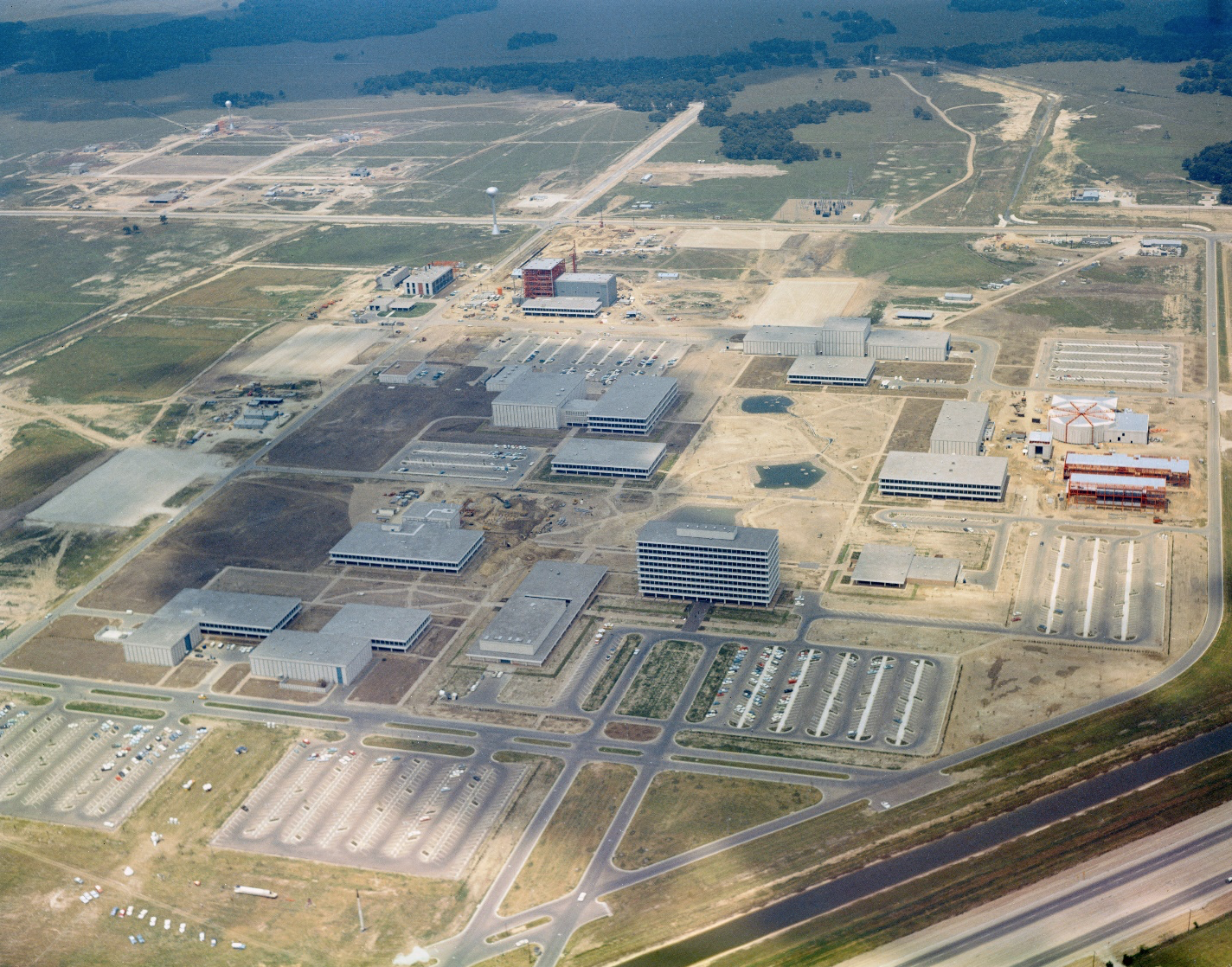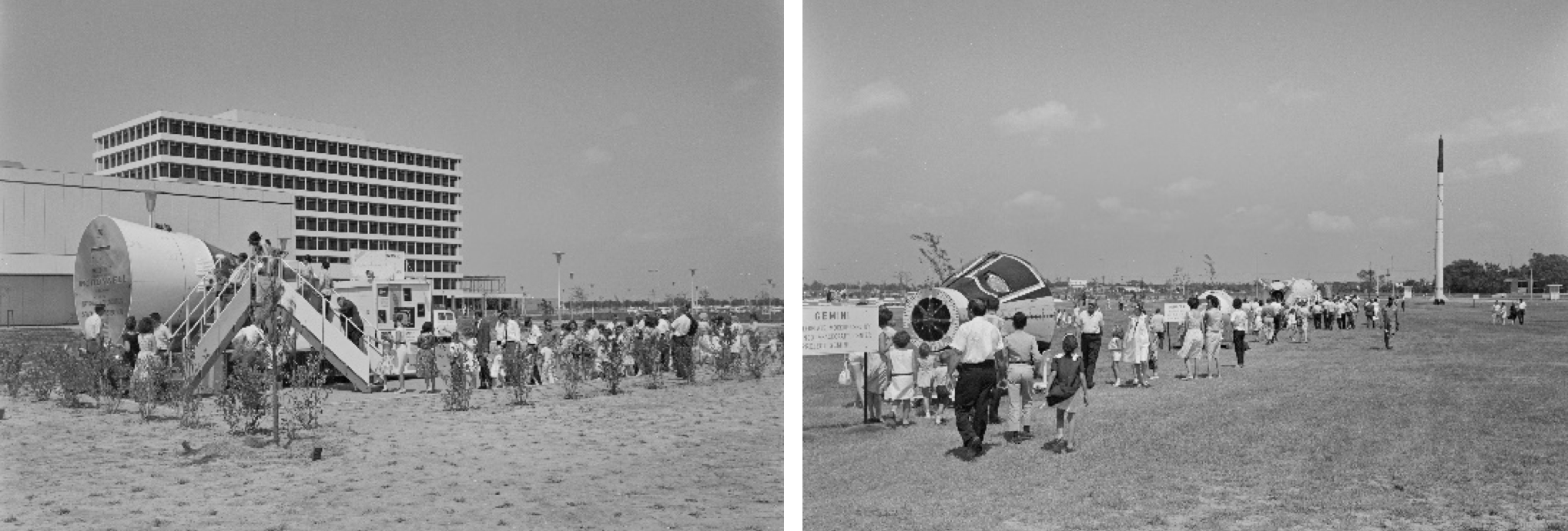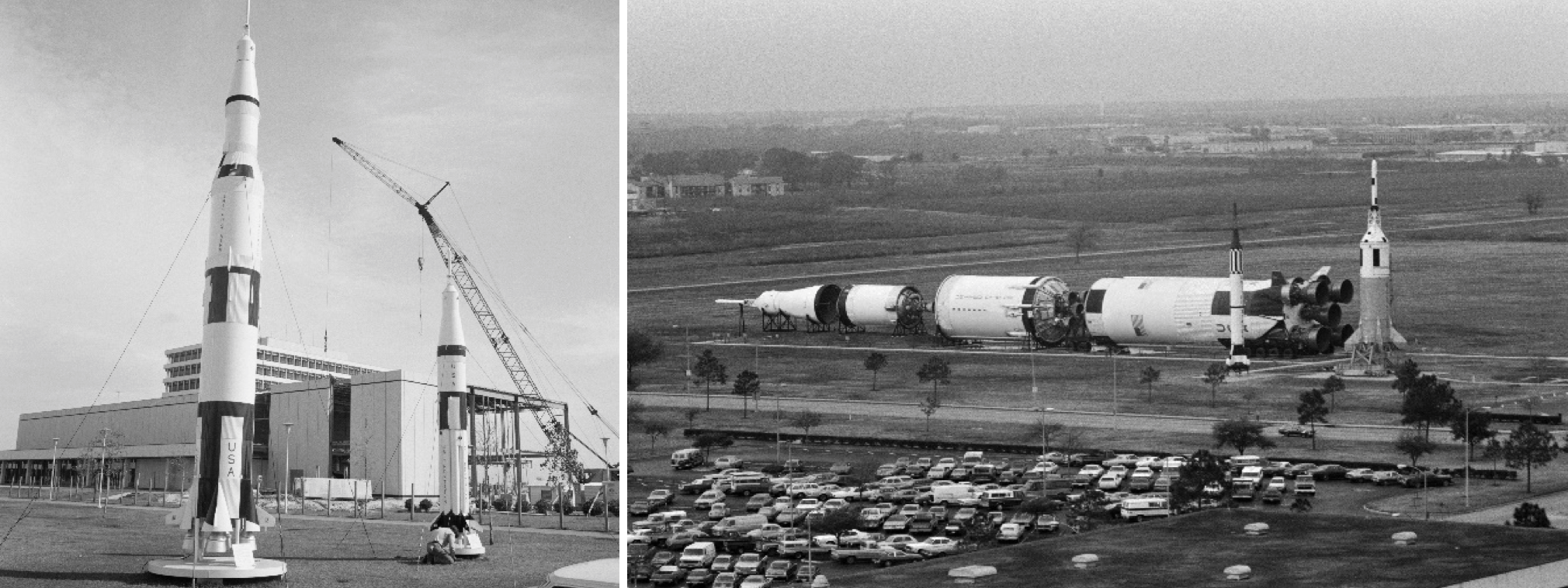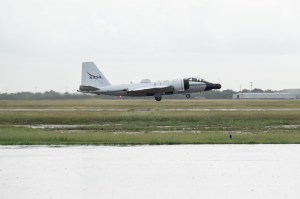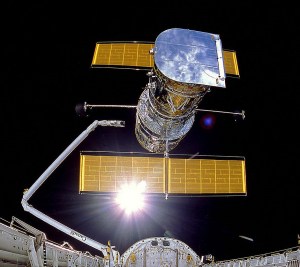The Manned Spacecraft Center (MSC), now NASA’s Johnson Space Center (JSC), welcomed public visitors for the first time with an open house the weekend of June 6–7, 1964.
NASA announced the selection of Houston as the site of the new facility in September 1961 and officially designated it the MSC two months later. Construction at the Clear Lake site near Houston began in 1962 and the first handful of employees moved in from temporary facilities in October 1963. Larger relocations of employees began in February 1964. Even as construction at the site continued, NASA wanted to show off the new facility to employees, their families and the community. MSC Director Robert Gilruth declared an open house and took great “personal and professional satisfaction” in welcoming the public to the center.
The 52,000 visitors who attended that first open house viewed a film about the nation’s space program in the auditorium, toured displays in the lobby of the auditorium building as well as larger displays mounted outside near the center’s main entrance. Indoor exhibits included a scale model of the center and memorabilia from Project Mercury. Outside, visitors enjoyed seeing a full-scale models of a Gemini capsule and Apollo command and lunar modules and a full-scale Redstone rocket identical to the ones that had launched Alan Shepard and Gus Grissom on their suborbital missions. In the evenings, the Goodyear blimp displayed a scrolling lighted sign saying “NASA SAYS THANK YOU HOUSTON.” An additional 12,000 visitors toured the site the following two Sundays afternoons.
By 1967, 1.7 million visitors had passed through the displays in the auditorium building and managers approved an 8,500-square-foot expansion for more display space which opened in 1968. The Faith 7 Mercury and the Gemini V capsules highlighted the older exhibit space. Over the years, additional artifacts were added to the collection at the Visitors Center, including the Apollo 17 Command Module America, the Lunar Test Article-8 that certified the Lunar Module for crewed flight during thermo-vacuum tests in 1968, and a Lunar Landing Training Vehicle astronauts used to simulate landing on the Moon. Renowned space artist Robert McCall added a mural entitled “Opening the Space Frontier – the Next Giant Step” in the Visitors Center lobby in 1979, depicting significant historical events in the nation’s space program. NASA officials formally dedicated the Visitors Center to the late US Congressman from Texas Olin E. Teague, a long-time supporter of the space program, on July 20, 1981, the 12th anniversary of the Moon landing.
Rocket Park was created after the decision to end the Apollo program with Apollo 17, and the successful landings of six Lunar Modules and 12 humans on the Moon’s surface. Near the center’s main entrance, a Saturn V display on loan from the Smithsonian used rocket stages from the cancelled Apollo missions. A Little Joe test rocket and a Mercury-Redstone rocket rounded out the display. NASA officials formally dedicated Rocket Park on July 20, 1979, during Space Day ceremonies commemorating the 10th anniversary of the Moon landing. The open-air display welcomed visitors and employees alike until a cooperative effort between the Smithsonian and Space Center Houston restored the Saturn V and enclosed it in an environmentally-controlled building in 2007.
Well over a million visitors passed through the center each year, with especially large crowds during open houses held to commemorate the 20th and 30th anniversaries of the first Moon landing in 1989 and 1999, respectively. In October 1992, Space Center Houston opened just outside the center’s front entrance, and the JSC Visitors Center closed. Items on display transferred to the new facility, and the full-scale Skylab trainer joined them. That display was so large that the building was literally built around it. Ongoing exhibits and tours at Space Center Houston provide the public with unique insight into the nation’s human space flight program, a tradition begun with the first open house held in 1964.





























